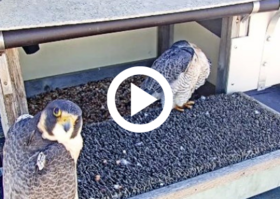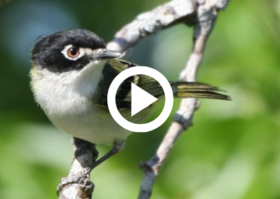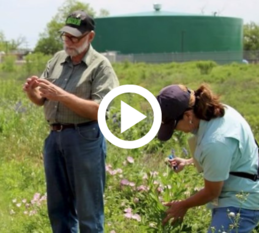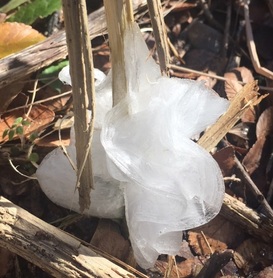|
|
|
|
 River otters are considered a "sentinel species" because they're very sensitive to pollution. By the 1970s poor water quality, unregulated hunting and loss of wetlands had reduced them to a small population in East Texas. But river otters are making a comeback and are now seen as far west as Austin. Watch this video of an otter having lunch at Fairfield Lake State Park. The otter's return indicates the waterways they enjoy are relatively healthy, and that's good news for us all.
These playful creatures are not always easy to spot, but biologist Jonah Evans offers otter insights in this article. Look for them on Texas Paddling Trails and the Great Texas Wildlife Trails in East Texas. The iNaturalist map shows places river otters have been spotted, so if you see one be sure and add it to help us keep track of their expanding range.
|
|
Build a Nestbox + Add a Nest Cam
|
|
|
|
Celebrate 2 Species Back from the Brink
|
|
 Peregrine falcons (PDF) can reach speeds over 200 mph, making them the fastest animal. But they couldn't escape DDT, a pesticide that brought them to near extinction in the U.S. Now their numbers are up due to a ban on certain pesticides and protection from hunting.
The best place to see peregrines is along our coast during fall or spring migration. Look for them on Mustang Island Loop, part of the Great Texas Wildlife Trails.
For a closer view, watch this University of Texas peregrine cam. The resident falcon is currently being courted, so fingers crossed we'll see chicks this spring!
|
|
 Black-capped vireos are songbirds that raise their young in Texas. They make dangling little nests out of spider webs. But livestock ate their habitat, and cowbirds preyed on them. By 1987 these charming birds were endangered.
We and our partners have spent 30 years rebuilding their habitat, and it's paid off. Black-capped vireos have been "delisted" – taken off the endangered species list.
Watch our video to hear vireos sing, see them nesting and learn how the power of conservation partnerships, good practices and changing attitudes brought this unique bird back from the brink.
|
|
|


If you want to give back to your community and support local natural resources, become a Texas Master Naturalist. Conservationists rely on Master Naturalists to act as biologists and do outreach, education and hands-on projects.
To become a Texas Master Naturalist, find one of the 48 chapters near you and register for the next training session. Once you complete your training in both field and classroom work, you'll be able to volunteer on projects. There are also opportunities for advanced training. Let your love of nature have an impact on the world around you – become a Texas Master Naturalist.
|
 The Art of Frostweed

You may have noticed frostweed on a morning winter walk, its delicate layers of ice falling in folds like ribbons. This phenomenon occurs when freezing sap in the stem expands through cracks, hardening as it goes.
The white blooms of frostweed appear in autumn, just in time to provide nectar for migrating monarchs and many other pollinators. If you'd like to add frostweed to your landscape, it grows in most parts of the state, preferring semi-shade.
|
|
|
|
|